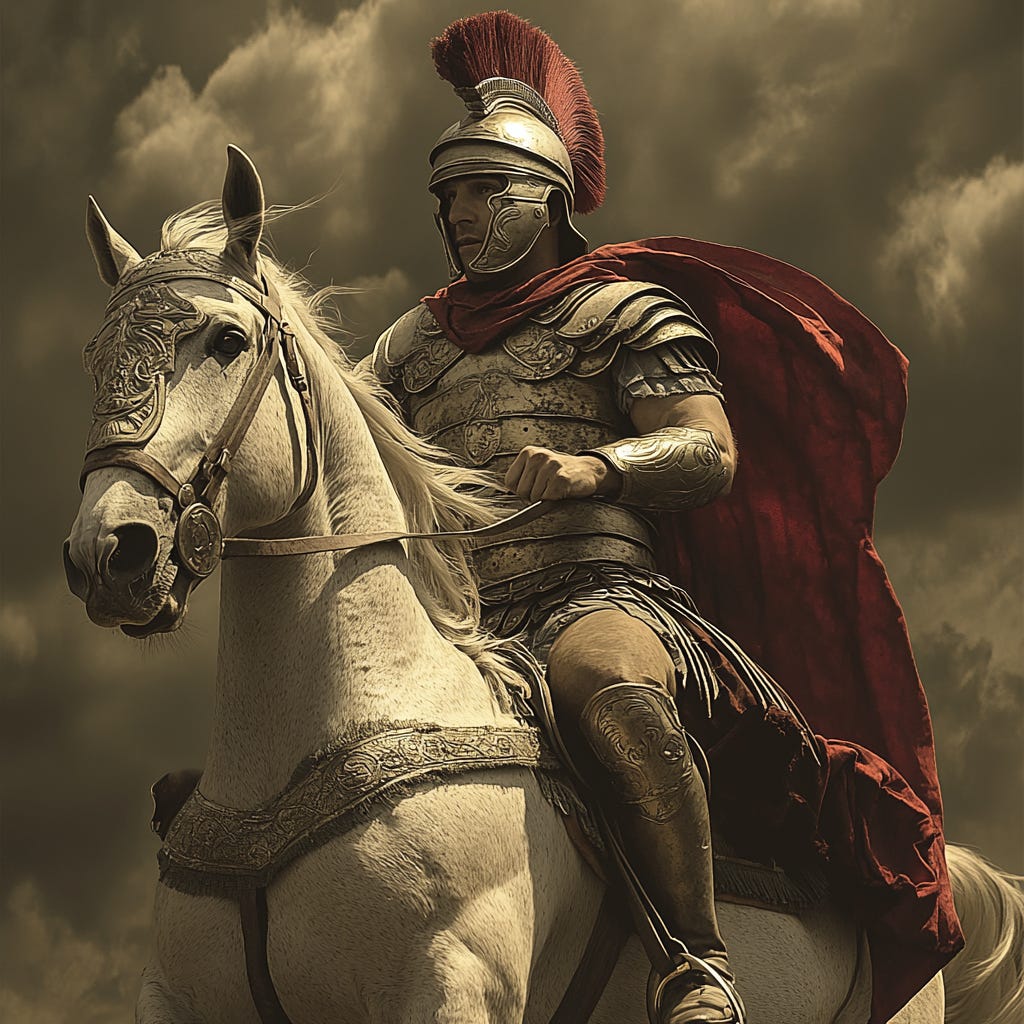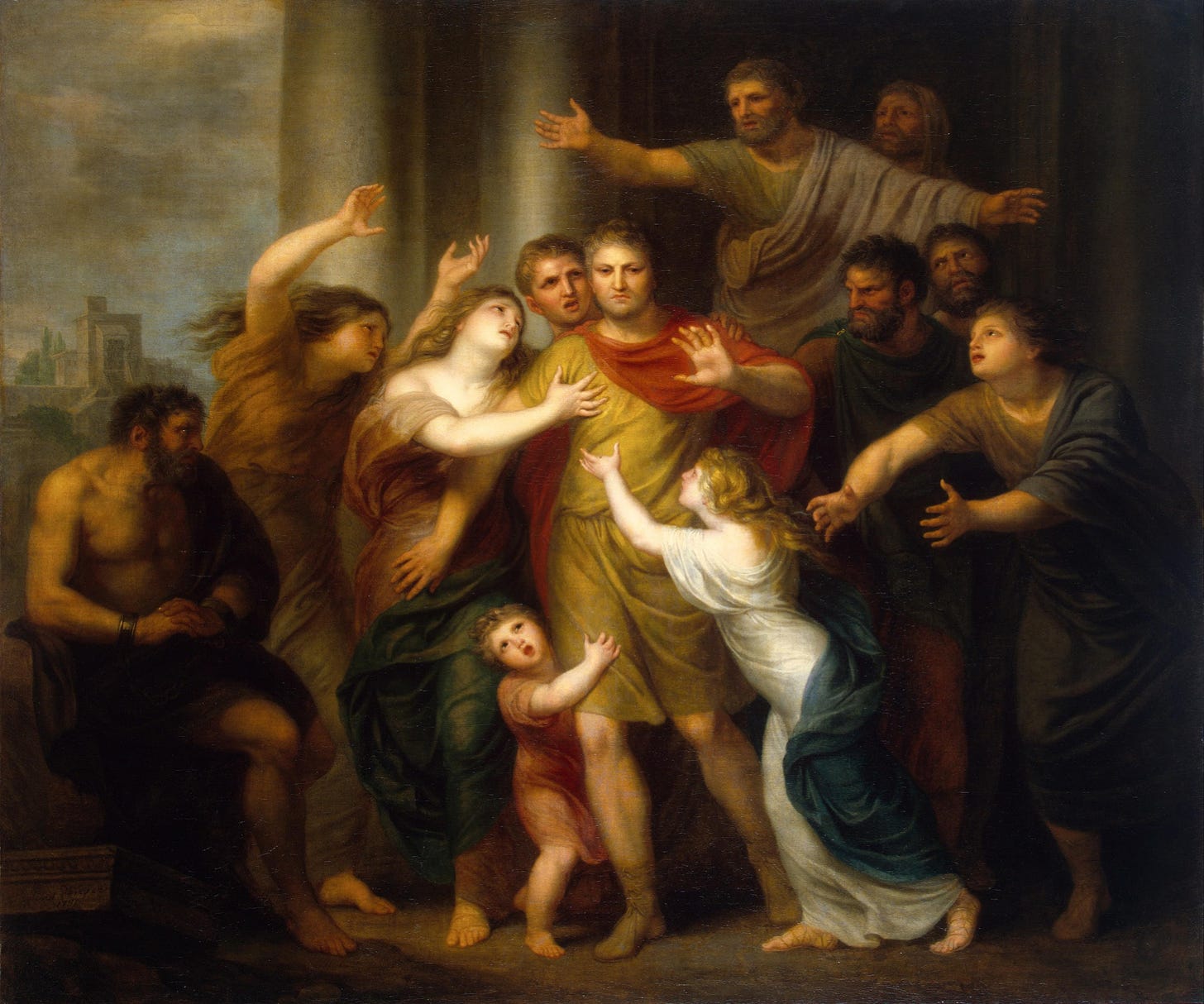
Last time I invited you to walk with me down memory lane, to my days in elementary school when my teacher, Mrs. Darmond, taught me about five ancient Roman stories that were meant to have an impact on my moral upbringing.
We’ve learned about the Horatii brothers who avoided a long and costly war between Rome and the nearby city of Alba Longa. About Mucius Scaevola putting his hand in the fire to punish it because it had failed to kill the enemy king. And about how Furius Camillus saved Rome from the invading Gauls. Or at least, so the legends go. I now turn to the remaining two stories, which will then lead to a broader discussion of what it all means.
(IV) Honor and sacrifice
The next episode took place during the First (out of three) Punic War that saw Rome and Carthage battling it out for supremacy in the Mediterranean. Our hero is Marcus Atilius Regulus, commander of the Roman legions during the first part of the war. The story is told by Livy (Historiae, XVIII), Horace (Odes, iII.5), Cicero, and Seneca.
Regulus, who was Consul at the time, had co-led with the other Consul, Lucius Manlius Vulso Longus, the Roman navy against its Carthaginian counterpart at Battle of Cape Ecnomus (off the southern coast of Sicily) in what Polybius tells us was the greatest naval clash of antiquity. A whopping 340 Roman ships and 140,000 soldiers faced 350 Carthaginian ships with 150,000 soldiers. The Romans routed the enemy, which eventually allowed Regulus to bring the war on Carthaginian soil by landing his troops at Clupea (modern Kélibia in Tunisia).
Unfortunately, Regulus did not wait for reinforcements, possibly fearing that the Roman Senate would actually sue for peace, given the massive human and economic costs of the war, and was defeated and captured by the Carthaginians.
Eventually—and here the legend begins—he was sent back to Rome to negotiate a peace treaty, promising to return to Carthage should he fail in his mission. Once in Rome, however, Regulus reported that during his captivity he had observed how debilitated the Carthaginian army was, and moreover that there was significant internal political strife. This was the moment to utterly defeat the enemy, not to agree to peace, he recommended to the Senate.
After this, stunningly, Regulus left Rome despite the entreaties of his family and friends, and returned to Carthage as promised, where he was subject to torture (his eyelids were removed) and killed by putting him into a barrel internally spiked with nails and rolled down a hill. (Note: these details were recounted to us kids by Mrs. Darmond.) Seneca disagrees and says that Regulus was crucified instead.
Either way, again we see themes of patriotism, courage, and honor: once a Roman gives his word he will keep it no matter what, even at extreme personal cost. That said, the real story is more likely that Regulus was left to die of starvation after his capture.

(V) The importance of taking your time
The last story—which as far as we can tell is pretty much historically accurate—is set during the Second Punic War, when the famous Carthaginian general Hannibal was wreaking havoc among the Roman legions in Italy by using elephants as disruptive weapons. We hear the story of our hero, Quintus Fabius Maximus Verrucosus, from several authors, including Livy, Cicero, and Plutarch.
In December 218 BCE the Consul Tiberius Sempronius Longus was defeated by Hannibal in the Battle of the Trebia and Fabius advised his fellow Romans to take a cautious attitude: instead of openly engaging the clearly superiors Carthaginian forces, they should make sure to protect their Italian allies and simply let things peter out. The Romans didn’t listen, which led to a major defeat at the hand of Hannibal the following year, at the Battle of Lake Trasimene.
Keep reading with a 7-day free trial
Subscribe to Figs in Winter: a Community of Reason to keep reading this post and get 7 days of free access to the full post archives.



